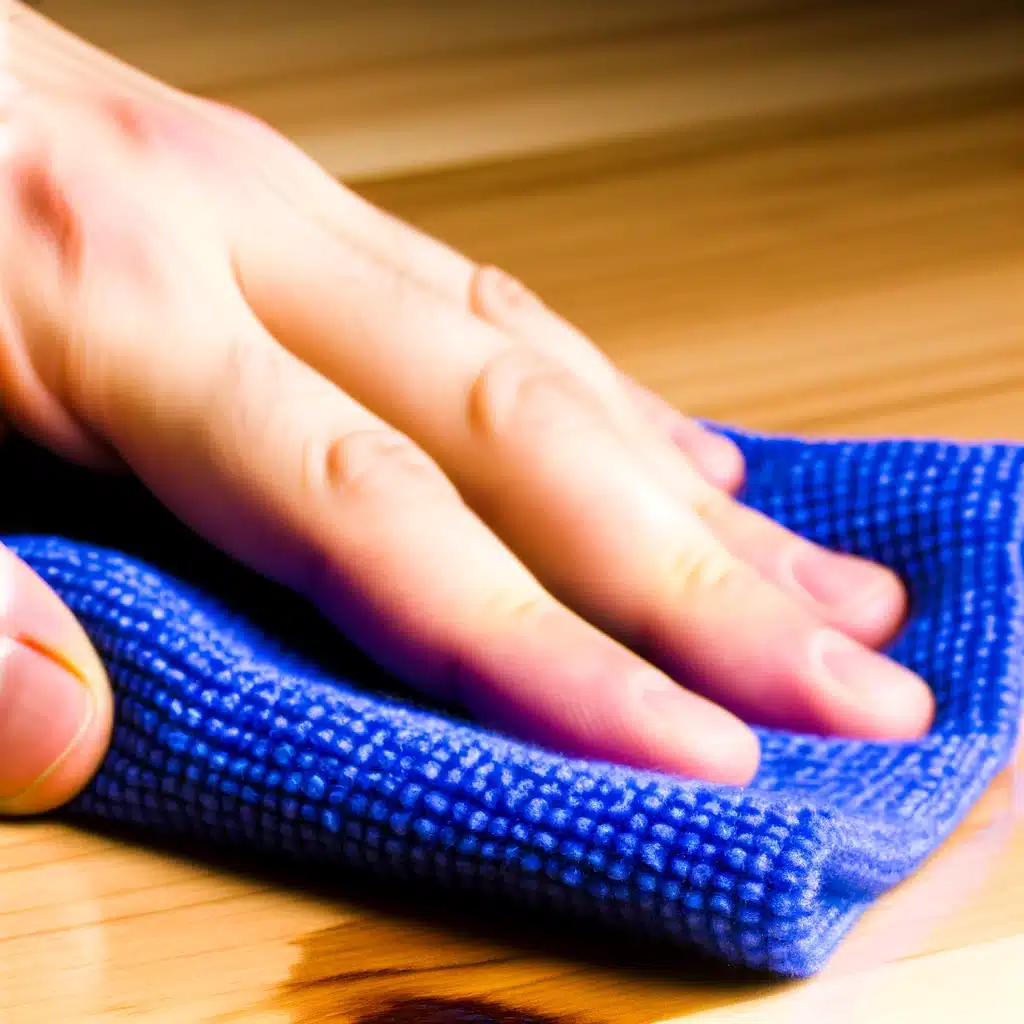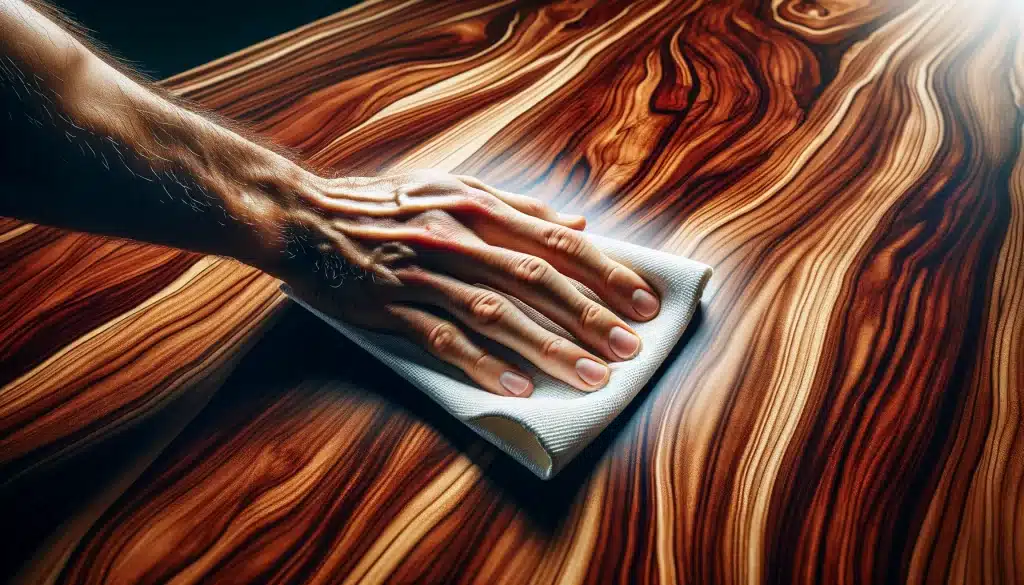Wood furniture polish restores shine and offers protection to furniture surfaces. It comes in various forms, including oils, waxes, and sprays.
Maintaining the elegance and luster of wooden furniture is vital for both aesthetics and longevity. With time, wood can lose its natural glow and become vulnerable to damage. A good quality wood furniture polish not only enhances the visual appeal by nourishing the wood, but it also adds a protective layer that resists dust and moisture.
Consumers should choose the appropriate type of polish based on their furniture’s finish and the level of shine they desire. Regular polishing can prevent dullness and keep wooden pieces looking as good as new. Homeowners are often advised to use a soft cloth for application to achieve the best results without scratching the surface. Whether your preference is for a natural beeswax product or a more modern silicone-based solution, there’s a furniture polish to meet the specific needs of your cherished wood items.
The Importance Of Wood Furniture Polish
Wood furniture polish plays a crucial role in maintaining the appearance and longevity of wood furnishings. Regular application keeps pieces looking rich and vibrant. It also provides a protective barrier against daily wear and tear.
Preserving The Beauty Of Wood
Wood is a natural, living material. It requires care to remain in excellent condition. Polish acts as a
preserving agent that enhances wood’s innate beauty. A consistent polish schedule maintains the wood’s luster and showcases its grain. Over time, wood can appear dull or dry. Polish revitalizes the surface, ensuring that the furniture keeps its warm glow. Properly chosen polish not only cleans but also nourishes the wood. It prevents cracks and preserves the color and texture of the furniture.
- Enhances wood’s natural grain and color
- Prevents drying and cracking
- Protects against dust and pollutants
Extending Furniture Life
Using polish is not just about immediate aesthetics. It is an investment in the furniture’s future. By forming a protective seal, polish shields the wood from environmental damage. This protection minimizes scratches and water rings. Regular polishing can significantly extend the life of a piece. Furniture without this care often experiences quicker degradation and can incur higher repair or replacement costs.
- Minimizes surface scratches and blemishes
- Shields from water and other liquid damage
- Reduces the need for costly repairs or replacement

Types Of Wood Furniture Polish
Every wooden piece at home shines with the right polish. Understanding different types can add life to furniture. Let’s explore the varieties of wood furniture polish.
Wax-based Polishes
Wax-based polishes bring out wood’s warm glow. They offer a natural look and feel. These polishes provide a durable finish. They also help in sealing wood pores against moisture. Popular varieties include beeswax and carnauba.
- Benefits: Natural finish, moisture resistant, adds shine.
- Considerations: Needs buffing, and can build up over time.
Oil-based Polishes
Oil-based polishes nourish wood deeply. They are made with natural oils like linseed or tung oil. These oils penetrate wood, restoring its beauty.
| Oil Type | Properties |
|---|---|
| Linseed Oil | Enhances grain, protective layer. |
| Tung Oil | Water resistant, and gives a matte finish. |
Reminder: Always wipe off excess oil to avoid a sticky surface.
Silicone-based Polishes
Silicone-based polishes offer a slick barrier against dust. They are easy to apply. Many favor them for their quick-drying nature.
- Apply with a soft cloth.
- Buff lightly for instant sheen.
Note: They may not be suitable for all wood types. Always test on a small area first.
“`
This HTML content is crafted to be SEO-friendly by using strong tags for emphasis, various list formats for readability, and a table to present information clearly, enhancing user engagement. The sentences are kept short and simple, accessible to younger readers, and technical jargon is explained.
Diy Polish Recipes And Techniques
Discover the art of creating your very own wood furniture polish. Crafting a DIY polish ensures a natural shine and offers a safe alternative for your environment.
Natural Ingredient Mixtures
Using simple household items, you can create effective polishes. These mixtures are eco-friendly and gentle on wood surfaces.
- Olive Oil & Lemon Juice: Combine two parts of oil with one part of lemon juice.
- Vinegar & Oil: Mix equal parts of white vinegar and vegetable oil for a cleaner and polish in one.
- Beeswax & Oil: Melt beeswax with oil, like jojoba or coconut, for a creamy polish.
Step-by-step Application Guide
Follow these instructions for a flawless polish application:
- Gather Materials: Secure a soft cloth and your DIY polish.
- Clean: Wipe the furniture to remove dust.
- Test: Apply a small amount in an inconspicuous spot.
- Apply: Rub the polish in a circular motion along the grain.
- Buff: Use a clean cloth to buff the furniture for a natural shine.
| Ingredient | Purpose | Ratio |
|---|---|---|
| Olive Oil | Shine | 2 parts |
| Lemon Juice | Fragrance | 1 part |
| White Vinegar | Cleaner | 1 part |
| Vegetable Oil | Polish | 1 part |

Best Practices For Polishing Wood Furniture
Best Practices for Polishing Wood Furniture are crucial for maintaining the allure and integrity of your treasured pieces. Polished wood furniture not only gleams with elegance but also gets a protective layer against dust and moisture. To keep wooden furnishings in impeccable condition, certain techniques and timings are paramount. Let’s delve into the art of wood furniture polish, embracing the right frequency, catering to antique pieces, and steering clear of common faux pas.
Frequency Of Polishing
Knowing how often to polish wood furniture is essential:
- Regular use pieces: Every 2-3 months.
- Less used items: Twice a year suffices.
- Climate matters: Dry climates demand more frequent polishing.
- Always, have an eye for dullness or dryness as cues for polishing.
Polishing Antique Wood Furniture
Antiques demand extra care:
- Use gentle, quality polish.
- Soft, microfiber cloths are best.
- Treat them once or twice a year.
- Seek professional advice if unsure.
Avoiding Common Mistakes
Avoid missteps for a flawless shine:
| Mistakes | Good Practices |
|---|---|
| Over-polishing | Stick to the recommended frequency. |
| Using harsh chemicals | Opt for natural, gentle solutions. |
| Rough cloths | Choose microfiber or soft cotton. |
| Drenching wood | Apply polish sparingly. |
Selecting The Right Polish For Your Furniture
Preserving the beauty of wood furniture calls for the right polish. With so many options, picking the perfect one can be daunting. This section will guide you through the process to ensure your furniture stays vibrant and protected.
Matching Polish To Wood Type
Different wood types respond to polish in unique ways. Identify your furniture’s wood to match it with an ideal polish. The table below outlines suitable polishes for various wood types:
| Wood Type | Recommended Polish |
|---|---|
| Oak | Beeswax-based Polish |
| Mahogany | Oil-based Polish |
| Pine | Water-based Polish |
Considering Usage And Environment
Furniture usage and room conditions affect polish choice. High-use areas benefit from durable finishes. Consider low-odor polishes for less-ventilated spaces. Here are factors to keep in mind:
- High Traffic: Opt for scratch-resistant polishes.
- Sun Exposure: UV-protectant polishes are ideal.
- Humidity: Moisture-resistant polishes work best.
Test Methods Before Full Application
Always test your chosen polish in an inconspicuous spot before applying it to the entire piece. Follow these simple steps:
- Apply a small amount of polish.
- Wait for the required drying time.
- Check for any color changes or damage.
A successful test means you’re ready to revitalize your furniture with confidence.
Environmental And Health Considerations
Environmental and health considerations are crucial when selecting wood furniture polish. The choices made can have significant effects. Understanding the impact of different polish options is essential.
Eco-friendly Polish Options
Finding eco-friendly furniture polishes is easier than ever. These products prioritize nature and health. They use sustainable ingredients that break down harmlessly. Look for polishes with:
- Natural oils like olive or coconut
- Bio-based waxes, such as beeswax
- Essential oils for fragrance instead of synthetic perfumes
- Certifications like EcoLogo or Green Seal
Eco-friendly policies reduce environmental harm. They avoid contributing to pollution. They also protect wood surfaces effectively. Your furniture stays beautiful without negative impacts.
Health Impacts Of Chemical Polishes
Chemical wood polishes can be harmful. They often include volatile organic compounds (VOCs) that evaporate into your home. Inhalation of these chemicals can lead to:
- Headaches and dizziness
- Respiratory issues
- Allergic skin reactions
Children and pets are especially sensitive to these chemicals. Using natural alternatives can mitigate these risks. Always read labels carefully and ensure adequate ventilation if you use conventional polishes.
By choosing policies with your health and the environment in mind, you promote well-being for both your home and the planet.

Frequently Asked Questions For Wood Furniture Polish
Which Polish Is Best For Wooden Furniture?
The best polish for wooden furniture is beeswax-based, providing natural protection and enhancing wood’s beauty. Avoid silicone-based polishes, as they may damage the finish over time.
What Is the Best Way To Polish Wood Furniture?
Begin by dusting the wood furniture with a soft cloth. Apply a gentle, non-abrasive commercial wood polish or make a natural solution with olive oil and vinegar. Rub in the polish with a clean, lint-free cloth, following the grain direction.
Finish by buffing the surface to a shine.
Is Murphy’s Oil Soap Good For Wood Furniture?
Yes, Murphy’s Oil Soap is effective for cleaning and maintaining wood furniture. Its gentle formula is designed to clean wood surfaces safely.
Is Olive Oil Good To Polish Wood Furniture?
Yes, olive oil can polish wood furniture. It moisturizes the wood and gives it a natural shine. Use sparingly and buff well to avoid residue.
Conclusion
Maintaining the luster of wood furniture is straightforward with the right polish. Choose a product that nourishes and protects, keeping the beauty of your wood pieces intact for years. Regular care ensures lasting shine and a healthy home environment. Let your furniture gleam with the perfect polish.

